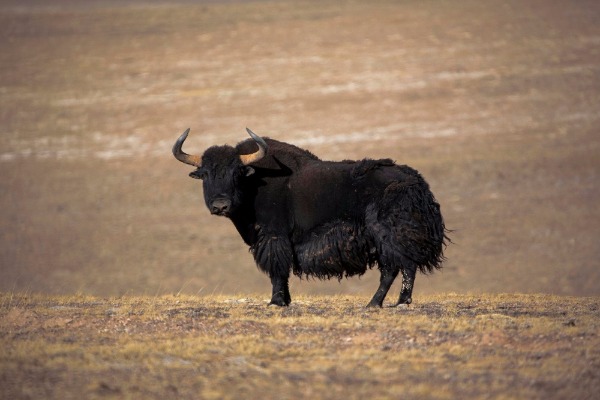 |
|
A wild Tibetan yak featured in the documentary.[Photo provided to China Daily] |
And for Cai Yu, the producer and scriptwriter behind the documentary, Purog Kangri helps him to ease his nostalgic yearning for his disappearing hometown: a remote, sparsely populated village in Southwest China's Guizhou province.
To some extent, the two places share geographical similarities in Cai's view, whose village often suffers from heavy frog and strong winds. Amid China's nationwide urbanization campaign, the village - once reliant on the support of the local mines - has seen most of its residents migrate to areas closer to the big cities.
Once a high-ranking official with the Hainan province-based company ZOSE Group, Cai quit his job to travel in Tibet and Qinghai in 2012.
"Qiangtang is one of the oldest areas in Tibet. It was formed millions of years ago and was once dotted by green landscapes and rivers. Relics dating back to the Stone Age were discovered there, demonstrating that it was once a cradle of humankind," Cai tells reporters at a premiere in Beijing on Tuesday.
When he returned to Hainan in 2015 and was appointed as the head of a film production subsidiary of ZOSE, he decided to shoot a documentary about Qiangtang, which has rarely been featured on the big screen.
After spending a lot of time on permission to film there, in November, 2016 he led a crew of 48, who drove there in 16 vehicles.
But the project turned out to be much more difficult than he had expected.
On the first day after departing Lhasa for Nagchu town, the closest inhabited area to Qiangtang, he received a call from his sister, who said their mother had been diagnosed with cancer and would need an operation. Unwilling to jeopardize the project and let down his colleagues, Cai didn't tell anyone about it.